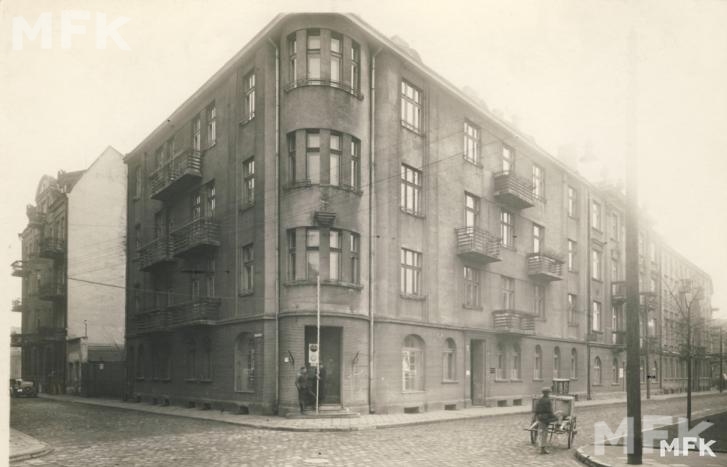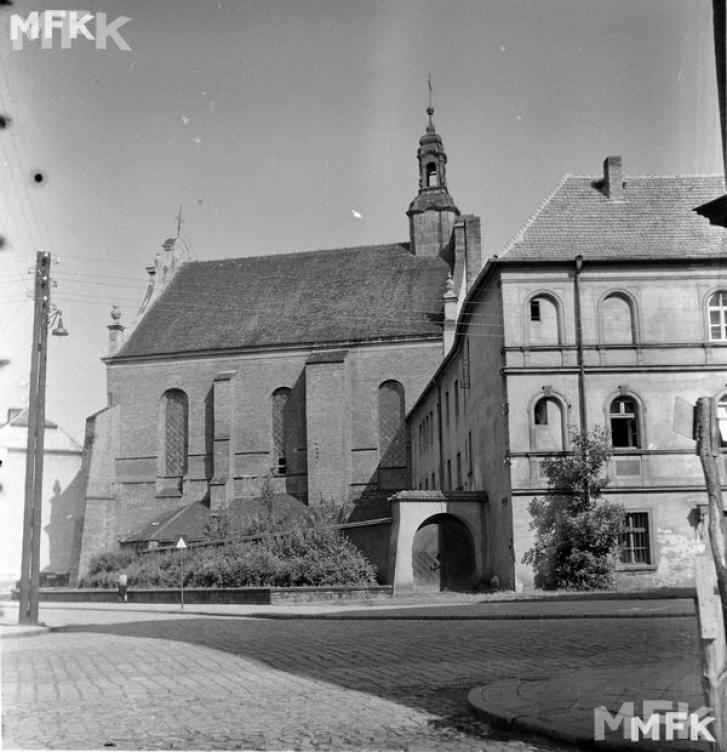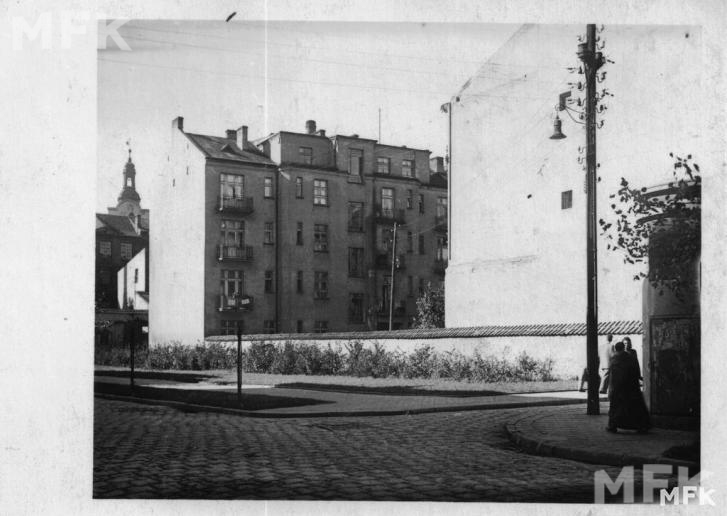
Historia ulicy Sukienniczej.
Stanowi przedłużenie ul. Kolegialnej i przez most na Prośnie – zwany Trybunalskim – dochodzi do Alei Wolności. Liczy nieco ponad 210 m długości i jest jedną z głównych arterii komunikacyjnych w śródmieściu.
Należy do najstarszych ulic lokacyjnego Kalisza i przypuszczalnie wytyczona została w drugiej połowie XIII w., podczas prac związanych z rozplanowywaniem przestrzennym miasta wkrótce po jego lokacji dokonanej przez księcia Bolesława Pobożnego.
Pierwotnie była węższa i krótsza, bo łączyła tylko sąsiadujące ze sobą ulice: Piekarską z Bydlęcą (dzisiejsza ul. Rzeźnicza).
W pierwszej połowie XIX w. przedłużono ją w obie strony. Najpierw – na początku XIX w. – przyłączono do niej od strony południowej nowo utworzoną ulicę prowadzącą przez dawny ogród ojców franciszkanów w kierunku Prosny i połączono ją drewnianym mostem zbudowanym na głównym korycie rzeki Prosny z ówczesną Aleją Józefiny (obecnie Aleja Wolności), gdzie w latach 1821-1824 zbudowano gmach Trybunału (dzisiejszy Sąd Okręgowy). Natomiast w połowie lat dwudziestych XIX w. w jej przebieg włączono od północy ul. Gościnną, która stanowiła przecznicę łączącą dwie ulice wybiegające z Głównego Rynku – Łazienną i Piekarską.
W 1941 r. ulica Sukiennicza otrzymała na całej swej długości identyczną szerokość, bowiem do tego czasu jej odcinek między ulicami: Łazienną i Rzeźniczą był dużo węższy.
Przy tej ulicy znajduje się kompleks zabudowań ojców franciszkanów obejmujący gotycki kościół pw. św. Stanisława BM, zbudowany w XIII-XIV w. i barokowy klasztor wznoszony etapami (na miejscu starszego) w okresie od XVI do XVIII wieku.
W pobliżu zbiegu tej ulicy z ul. Browarną w 1906 r. miał miejsce nieudany zamach bombowy dokonany przez członków organizacji bojowej Polskiej Partii Socjalistycznej na pułkownika barona Kellera, dowódcę stacjonującego w Kaliszu 15 Aleksandryjskiego Pułku Dragonów, znienawidzonego przez mieszkańców miasta za brutalne tłumienie wszelkich demonstracji.

The name of the street points to the fact that craftsmen’s cloth halls might have been situated there. The street, which is an extension of Kolegialna Street, reaches Aleja Wolności [Liberty Avenue] across the bridge called Trybunalski. The Sukiennicza Street is one of the main communication thoroughfares in the centre of the town. It i s one of the oldest streets within the boundaries of the chartered town. It came into being in the second half of the 13th century when the prince, Boleslaus the Pious, after granting a charter to the town, decided about a new spatial planning of Kalisz. Once it was much shorter and narrower, since it just joined the Piekarska and Bydlęca Streets. The latter one is now called Rzeźnicza Street.
The street was extended, in both directions, in the first half of the 19th century. First, at the beginning of the 19th century, a new street that ran through the former Franciscan garden towards the Prosna River was included into Sukiennicza Street from the southern side. It was also joined, by means of a wooden bridge, to the then Aleja Józefiny [ Józefina Avenue],now Aleja Wolności where an edifice of Trybunał [the court building] was erected in the years 1821-1824. Today the edifice is a seat of Sąd Rejonowy and Okręgowy. [the District and County Court]. In the middle of the 19th century Gościnna Street was included into Sukiennicza Street from the northern side Before this fact, Goscinna Street was just a turning that joined two other streets that led from Rynek Główny, [ Main Market Street], that is, Łazienna and Piekarska. Streets.
Since 1941 the whole Sukiennicza Street was of the same width, as earlier the part between the Łazienna and Rzeźnicza streets was narrower.
There is a collection of buildings situated in Sukiennicza Street belonging to the Franciscan Order, that is, a Gothic church built in the 13th and the 14th centuries dedicated to Saint Stanislaus, the bishop and martyr and a baroque monastery erected in stages in the period from the 16th to 18th centuries. The present buildings of the monastery came into being on the place of older ones.
In 1906, in the place where Sukiennicza and Browarna streets meet, a failed bomb attack on Colonel Baron Keller took place. Keller was the commander of the 15 Alexandrian Regiment of Dragoons which stationed in Kalisz, and the attack was organised by the members of the Organizacja Bojowa Polskiej Partii Socjalistycznej [the Fighting Organisation of the Polish Socialist Party]The commander was hated by the citizens of Kalisz for his brutal repressions of demonstrations.
Zdjęcia ze strony Wirtualnego Muzeum Fotografii Kalisza www.wmf.kalisz.pl




